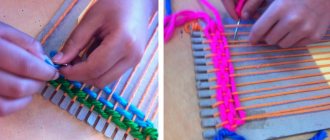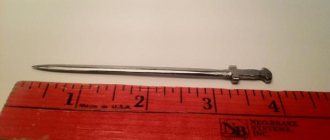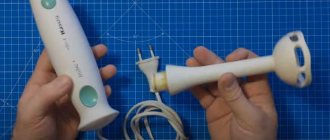It is believed that cinder block is excellent for the construction of residential buildings and other buildings, due to its availability and compliance with the required characteristics.
To further reduce the cost of the material, many begin to produce it themselves.
This can be done either using improvised means or using a special machine. The device is not cheap, but you can also build it yourself.
Description of the device
A vibrating cinder block machine is equipment that helps compact the mortar poured into molds . This is done so that there are no voids or air bubbles in the mass for making the block. The finished cinder block must fully comply with GOST, otherwise it cannot be used for building a house.
Important! Blocks that were made using a brick press always have better frost resistance, resistance to deformation, and strength than those that were made using other technologies.
The vibrating machine consists of several parts. In its lower part there is a frame where the vibrating table is located. It rests on rubber cushions. The vibrating table has several vibrators with adjustable strength.
The design has a backfill device for pouring concrete mixture . This is a tin container that allows you to pour concrete into the mold evenly and quickly. There is also a punch and a die.
The design includes a device for pressing the matrix with the pallet to the vibrating table. Vibrators for cinder blocks are equipped with electric motors and a drive.
Some vibrating machines use void formers. They are inserted into forms with concrete mixture and make holes in them. The output is a hollow cinder block.
What are they?
Machines for the production of cinder blocks are:
- automated stations;
- semi-automatic machines;
- manual equipment.
A fully automated machine is more suitable for enterprises that constantly sell cinder blocks. The productivity of such equipment is up to 1000 blocks per hour.
All you need to do is simply pour the cinder block ingredients into the container and press the start button. The mini-station will independently mix, pour, and compact stones ; the operator only needs to monitor the work. The advantage of such a vibrating machine is the lack of human intervention, the disadvantage is the high cost. Similar devices are produced by Bess.
Semi-automatic machines already require human intervention. Some operations here are automatic, but others will have to be performed manually. For example, in different configurations, the machine itself mixes the mixture for the stone, and the operator needs to lower the vibropress.
In other machines, the operator only participates in pouring the finished solution, and the rest is done by the vibrating table. The production of such machines is carried out by the Sibir company.
Manual equipment is considered the least productive, but it fully satisfies the needs for cinder blocks in private construction. The average cost of such a device will cost 200,000 rubles. A good representative is a device from VibropressStroy .
Reference! Depending on the type of block formation, machines can be mobile or stationary. The first ones are small in size and stones can be produced immediately on the construction site. Stationary equipment requires a lot of space, but its productivity is higher.
Principle of operation
All of the listed machines operate on a similar principle:
- The prepared solution is poured into a special container.
- The mixture is transported into the matrix.
- With the help of vibration, the mixture is leveled and compacted.
- If there are devices for voids, they are inserted into blocks with mortar and are strongly compacted under pressure and vibration.
- The matrix rises above the blocks and the finished mixture, already formed into blocks of the required size, is sent for drying.
The only difference between the devices is that in a fully automated machine all operations are performed independently. Even the mixing and transportation of the solution occurs automatically .
If the machine is manual, then the person must first prepare the slag mass in a concrete mixer, then pour it into molds, and then compact it well using a vibrating table. Again, you will have to carry the blocks to dry yourself.
Cinder concrete blocks - characteristics and purpose of the material
One of the reasons for the increased popularity of slag-filled concrete blocks is the low cost of the material. It is associated with the use of waste from metallurgical enterprises - slag - in the production process.
Along with traditional components, Portland cement and river sand, various aggregates are used:
- brick break;
- crushed stone screening;
- granite chips;
- various slags and ash;
- expanded clay particles.
The use of cinder blocks in construction allows you to reduce the cost of constructing walls several times
The manufacturing process is carried out in various ways:
- industrial method at specialized enterprises with processing of products in drying chambers;
- at home from available raw materials, using a self-assembled machine for making blocks.
Using homemade equipment you can produce various types of slag concrete products:
- full-bodied, with an increased margin of safety. They are used quite rarely, as they retain heat less well;
- hollow, characterized by high thermal insulation properties. To ensure strength, the volume of cavities should not exceed 1/3 of the total volume of the product.
The dimensions of the products are determined by the dimensions of the mold. When making products yourself, the size of the molding box can be any. However, many people prefer the standard dimensions of 19x18.8x39 cm.
The increased volume of the slag concrete block can significantly reduce the duration of various types of construction work:
- construction of capital walls;
- construction of internal partitions.
It is perfect for the construction of utility buildings, sheds, and storage buildings.
If you need to make a cinder block yourself, the machine allows you to quickly solve the problem. The resulting material has many advantages:
- high thermal insulation characteristics. Due to reduced thermal conductivity, the material prevents heat loss;
- increased dimensions and low weight. This makes it easy to transport products and quickly build walls from them;
- resistance to the development of microorganisms. This is achieved due to the properties of the slag included in the structure of the block;
- low price. A cinder block machine with your own hands allows you to make products that are cheaper than purchased blocks.
The material also has weaknesses:
- low durability. The period of operation of buildings made of slag concrete is up to three decades;
- reduced safety margin. The characteristics of the material allow the construction of buildings no more than two floors high;
- the appearance of cracks under the influence of shear forces. During shrinkage, cracking occurs along the cinder block mass.
To ensure an attractive appearance of buildings, the cinder block surface needs external cladding. These disadvantages do not stop developers who want to build a utility building or a small building in a limited time at low costs.
You can use homemade cinder blocks a month after they are made.
How to make a vibrating machine at home?
If the machine is needed for individual production of blocks when building your own house, then there is no point in purchasing expensive equipment. You can try making it yourself .
Before you begin preparing tools and materials, you need to find the drawings. Such schemes can be found on the Internet on construction forums. There people share their experiences and talk in detail about the collection of equipment and its operation.
Necessary materials
To create a machine for the production of cinder blocks with your own hands, you need the following materials :
- galvanized metal sheet 3 mm thick;
- 1 meter of steel pipe with a diameter of 7-9 cm;
- steel strip 3 mm thick, 30 cm long;
- electric motor with power up to 1 kW.
A sheet of galvanized metal is necessary to create a matrix into which concrete and slag mixtures will be poured. The thickness of 3 mm is just right for these purposes.
The steel tube must be prepared for void formers . It is unlikely that self-production will produce only solid blocks. You can choose the diameter of the pipe yourself, depending on what diameter of the void you want to get at the outlet.
Note! Solid blocks are used to construct load-bearing walls, and cinder blocks with voids are used for internal walls and partitions.
The electric motor will be useful for arranging the drive, due to which the solution will be compacted in the molds.
Necessary tools and consumables
Consumables for assembling a vibrating machine will require a large amount of fasteners: screws, nuts, bolts, anchors. You also need to prepare tools :
- angle grinder or grinder;
- welding machine;
- vice;
- a set of keys.
It is also better to prepare screwdrivers and a screwdriver (if available) in advance - with the help of these tools you can assemble the machine much faster. For an angle grinder you need to choose a disc that can work on metal. You can’t do without a welding machine - the vibrating machine must be made with high quality and last throughout the entire construction phase.
If you have no experience with welding, then you shouldn’t risk it - this procedure requires special skills. In this case, it is better to hire an experienced welder and explain the task to him. You will need hex keys and others, so it is better to have a good set.
Step by step procedure
After all the materials, tools and consumables are ready, you can begin manufacturing the machine:
- At the first stage, you need to decide on the size of future blocks. This indicator must be written down in the drawing. The most common option is 200x200x400 mm.
- When making a matrix for blocks, you need to take into account the following point: the height of the matrix will be 50 mm higher than the height of the finished block. For manufacturing, a sheet of steel is cut using a grinder. You need to cut this sheet in advance, and also take care of the presence of partitions between the forms.
- Using a welding machine, the cut strips are welded together on the outside.
- Production of void former. The metal pipe is cut into lengths less than the height of the matrix by 5 mm. The device must have a cone-shaped shape; this can be achieved by clamping the pipe in a vice and welding it. The tubes must be blind on all sides; at the end they are connected to each other by welding.
- The void former is welded to the matrix or a removable structure is made.
- Bolts are attached to the outer long wall of the mold, onto which the electric motor is installed.
Do not forget that there must be a metal apron on the top of the matrix. At the final stage, the finished machine is placed in a frame, cleaned and painted.
What can you make a cinder block from?
What cinder blocks are made of is clear from the very name of the building material. One of the components of the cinder block solution is slag, which is formed as a result of coal processing.
Additionally, the blocks may include other materials: sawdust, crushed or old brick, metallurgical waste or products of coal combustion in boiler houses. All these materials will not interfere with the production of cinder blocks, as they will give them good thermal insulation properties.
The mixture also includes coarse sand, water and cement. To increase density, you can add concrete strengthening mixtures.
The standard composition of the mixture for blocks includes sand (2 parts), cement (1.5 parts), gravel (2 parts), slag (7 parts), 1.5-3 parts water. But in fact, not all craftsmen adhere to the standard recipe, preferring to make the composition depending on the available slag and the parameters of the future structure.
To ensure plasticity, when making cinder blocks at home, you can add a plasticizer to the composition (5 g per block). This component allows you to improve the strength of the block, its frost resistance and water resistance, and prevent the appearance of cracks. A plasticizer is added during vibration casting.
Possible difficulties in the process
During the assembly process of the cinder block machine, errors and difficulties may arise :
- the vibrator is attached too loosely to the machine;
- there are no lids on metal forms;
- the finished product has not been painted;
- the tubes for the void formers are not welded on one side - then the solution will get there.
If you follow the instructions and select high-quality materials for the manufacture of the machine, then there will be no problems. During assembly, you can also use the services of professionals who can help with certain procedures.
Correct casting of the mixture
Using a trowel or shovel, you need to carefully pour all the components into a container of water and let this mass sit for some time. Next, it is transferred to a metal sheet and brought to the desired state by thorough mixing.
Afterwards, the finished mixture is placed in a mold and subjected to vibration using a special device that creates vibration impulses. You can also get by by tapping the sides of the mold with a shovel.
After two days, the compacted block must be carefully released from the mold by unhooking the closures on it, and in this form it must be left to harden for another 26 days.
A standard block of expanded clay weighs from 16 to 17 kg and requires about 1.5 kg of cement, 4 kg of sand and 10.5 kg of expanded clay. Having made some simple calculations, we find that each block costs about 25 rubles, with the average cost of finished expanded clay being 30 rubles without delivery.
Pros and cons of making your own
There are several advantages to making your own cinder block machine:
- reducing the cost of the construction process from homemade blocks;
- the ability to make a machine to suit your needs;
- the ability to equip the equipment with the necessary containers at your request;
- the ability to make a new matrix if it becomes unusable.
There are also disadvantages, including the length of time it takes to manufacture the machine and possible mistakes made due to inexperience.
Types of forms for foam concrete
Metal prefabricated formwork for foam concrete
Formwork for foam concrete is classified according to several criteria:
- According to the material from which it is made - wood, plywood, plastic, foam, metal;
- According to the parameters - for large and small wall blocks, for tongue-and-groove blocks;
- By design - completely collapsible or a solid base with mobile partitions. The first ones are very easy to store and transport, since all the elements when disassembled take up little space, while the second type is more reliable in operation.
Also, formwork for foam blocks can be characterized by its type of production, namely cast and cutting. In the first case, the equipment must have form-building partitions, when cast equipment simply requires a reliable frame.
Formwork for driving monolithic foam concrete and its subsequent cutting
If you have an organized production of cast foam concrete, then sometimes you practice cutting blocks, it is not necessary to purchase additional formwork for the monolith. If you do not install partitions, you can get an option for equipment for cutting technology.
In order for the blocks to be obtained with precise parameters, and the entire work process to be simplified as much as possible, it is necessary to select forms for the blocks that meet certain requirements.
Advantages
A distinctive feature of the blocks is their increased level of sound insulation. They protect people in the building from the negative effects of external factors. The products meet the requirements for construction raw materials and are combined with other materials, including insulation materials. They are durable, reliable, tough. Let's take a closer look at the positive aspects:
- application for external and internal construction activities;
- increased strength, allowing for the construction of foundations;
- high coefficient of sound insulation provided by cavities;
- low weight of hollow blocks;
- long service life. The material is not subject to rotting, retains performance characteristics at high humidity, and is not susceptible to temperature changes;
- high resistance to elevated temperatures;
- environmental friendliness, which is based on the use of safe raw materials;
- low price is a plus that customers appreciate;
- savings during construction due to the fact that the dimensions allow using one sand block instead of three bricks. The result is the use of less mortar and bricks. The construction of buildings from sand blocks reduces costs by 40% compared to brickwork;
- reduction of construction time;
- simplicity of masonry, allowing you to build a building yourself without hiring hired builders.
Having these advantages, this material has a number of minor disadvantages.











